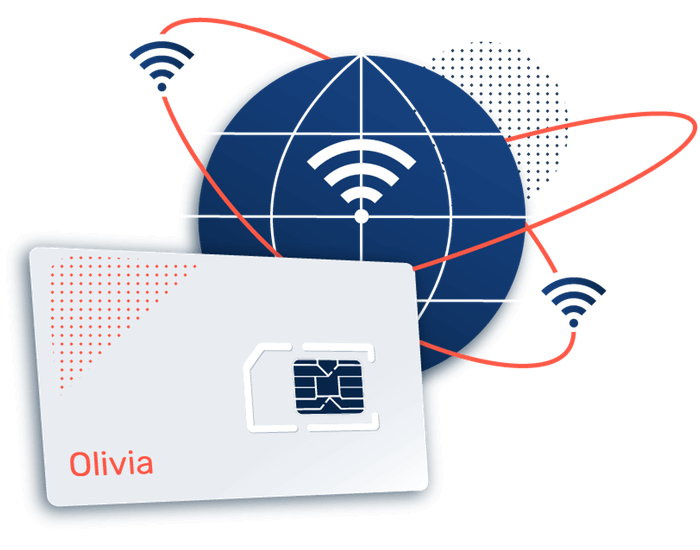Euicc Vs Uicc eUICC (eSIM) Support for Routers

The surge in environmental concerns has necessitated innovative solutions for monitoring and managing our natural assets. IoT connectivity for environmental monitoring has emerged as a big technological advancement. It plays a crucial position in amassing real-time knowledge to assist mitigate environmental disasters, manage natural sources, and analyze climate change impacts extra successfully.
Devices that make the most of IoT connectivity may be deployed in varied environments, from urban settings to distant wilderness areas. These devices can continuously monitor variables such as air quality, water ranges, soil moisture, and temperature. They present invaluable data that may inform coverage selections, help conservation efforts, and foster sustainable practices inside communities.
Sensors related via IoT networks can detect modifications in environmental circumstances almost instantaneously. For instance, in agricultural settings, smart sensors can relay soil moisture ranges to farmers, enabling them to optimize irrigation schedules. This not only conserves water but in addition enhances crop yield, promoting sustainability in food production.
Real-time monitoring is essential for disaster management. IoT units can monitor parameters similar to rainfall and river levels to predict floods. By analyzing this information via predictive algorithms, authorities can problem well timed warnings, thereby minimizing risk to life and property. Flood alerts can allow native populations to evacuate or take precautionary measures before situations worsen.
Is Esim Available In South Africa Understanding eSIM for Connectivity
Furthermore, IoT connectivity can help in wildlife conservation efforts. By putting tracking devices on endangered species, researchers can monitor their movements and behaviors. This information is invaluable for developing conservation strategies and defending susceptible ecosystems. Insights gained from such monitoring can inform habitat restoration efforts and assist manage tourist interactions in delicate areas.
Air quality monitoring is another essential software of IoT technology. Various pollution can drastically affect public health and the environment. Mobile sensor networks can provide localized information about air high quality, empowering citizens to make knowledgeable selections. When communities are conscious of air pollution levels, they'll advocate for cleaner practices and help local laws aimed at lowering emissions.
Euicc Vs Esim Understanding eSIM for Connectivity
Waste management additionally benefits significantly from IoT connectivity. Smart bins equipped with sensors can monitor waste ranges and relay this information to waste administration companies. As a outcome, collection schedules can be optimized, reducing operational prices and congestion in urban areas. This innovation not solely improves efficiency but in addition contributes to cleaner cities.
In the context of climate change, IoT devices can track long-term developments in environmental conditions, offering insights which are important for understanding and mitigating impacts. By gathering knowledge across varied geographic areas, scientists can develop complete models that inform policy and drive collective motion in opposition to climate-related challenges.
Can You Use Esim In South Africa Features of eSIM and eUICC
Utilizing IoT for environmental monitoring also leads to neighborhood engagement and consciousness. When residents can entry real-time information concerning their environment, they turn out to be more invested in local issues, resulting in grassroots actions and initiatives geared toward fostering sustainability. This participatory method strengthens communities and fosters a culture of environmental stewardship.
Challenges exist in implementing IoT connectivity for environmental monitoring. A vital hurdle is the deployment of reliable network infrastructure in remote or underserved areas. In some areas, the shortage of internet connectivity can hinder the effectiveness of IoT devices. Innovative options have to be developed to establish connectivity in these places, ensuring that vital environmental information can be recorded and analyzed.
Security issues symbolize another critical concern. IoT devices are sometimes weak to cyber threats, which can compromise the integrity of the data collected. A breach might lead to misinformation about environmental conditions, doubtlessly leading to harmful choices by policymakers. Therefore, strong cybersecurity measures must be built-in into IoT systems to safeguard in opposition to unauthorized entry and data manipulation.
The cost of implementing IoT options may also be a barrier, particularly for smaller organizations and communities. Access to funding and resources is important to ensure equitable alternatives for utilizing these technologies. Collaborative efforts between governmental bodies, see page non-profits, and personal sectors may help facilitate the necessary monetary support for deploying IoT options in environmental monitoring.
Difference Between Esim And Euicc Differences Between SIM, eSIM, iSIM
Governments play a vital function in creating regulatory frameworks that encourage the accountable use of IoT technologies. Policies that protect information privacy, manage useful resource use, Website and establish environmental standards might help guide the development and utility of IoT systems. Public-private partnerships can additional bolster efforts to leverage IoT for environmental sustainability while selling economic growth - Dual Sim Vs Esim.
The future of IoT connectivity for environmental monitoring holds large potential. As technology advances, the deployment of extra sophisticated sensors and improved information analytics capabilities will enhance our understanding of environmental points. Integrating artificial intelligence can even optimize data evaluation processes, offering actionable insights that lead to improved useful resource management.
In conclusion, IoT connectivity for environmental monitoring represents an revolutionary method to addressing pressing ecological challenges. By harnessing real-time information and fostering engagement, it empowers communities and policymakers to make informed decisions. While challenges persist, the continuing evolution of know-how, coupled with collaborative efforts, will allow more effective environmental management methods in the coming years.
Esim Vodacom Sa IoT eUICC (eSIM) Introduction
- Integration of IoT sensors facilitates real-time data assortment on air and water quality, aiding in well timed environmental assessments.
- Utilization of low-power wide-area networks (LPWAN) enhances the range of connectivity for distant monitoring of ecological techniques.
- Deployment of smart grids with IoT capabilities allows efficient energy administration while decreasing greenhouse gasoline emissions.
- Advanced analytics and machine studying algorithms can interpret knowledge from interconnected devices, revealing patterns in environmental adjustments.
- IoT connectivity enhances wildlife monitoring by employing GPS trackers, offering invaluable information for conservation efforts.
- Collaborative platforms permit data sharing amongst researchers, municipalities, and companies, fostering a community-oriented approach to environmental protection.
- Integration with cellular functions empowers residents to have interaction in local environmental monitoring, selling consciousness and action.
- Remote sensing technologies mixed with IoT contribute to precision agriculture, resulting in decreased pesticide utilization and higher resource administration.
- Predictive maintenance of infrastructure, such as dams and dams, is improved via steady IoT monitoring, mitigating risk of environmental disasters.
- Integration of blockchain know-how with IoT helps clear and tamper-proof knowledge assortment, ensuring the integrity of environmental monitoring efforts.
What is IoT connectivity for environmental monitoring?

IoT connectivity for environmental monitoring refers to the integration of Internet of Things (IoT) devices and networks to gather and analyze environmental knowledge such as air high quality, water quality, temperature, and humidity. This technology enables real-time data transmission and evaluation, facilitating timely responses to environmental adjustments.
How does IoT improve environmental monitoring?
IoT improves environmental monitoring by way of automated knowledge assortment, enhanced accuracy, and real-time analytics. Sensors placed in varied places can repeatedly gather information, allowing for proactive decision-making and efficient resource administration.
Esim Vodacom Prepaid eUICC vs eSIM: Key Differences
What forms of sensors are generally utilized in environmental monitoring?
Common sensors include air quality sensors for detecting pollutants, water quality sensors for measuring pH and contaminants, and weather stations that monitor temperature, humidity, and atmospheric stress. Euicc Vs Uicc. These sensors are integral to offering correct knowledge for analysis.
What are the advantages of using IoT for environmental monitoring?
The advantages include elevated accuracy in data assortment, real-time monitoring capabilities, lowered human intervention, cost-effective solutions for knowledge acquisition, and the ability to predict and mitigate environmental points before they escalate.
Dual Sim Vs Esim eUICC Profile Management Tools Overview

How safe is IoT connectivity for environmental data?
IoT connectivity may be secured through various measures, including encryption, secure communication protocols, and regular updates for gadget firmware. Ensuring sturdy safety practices is crucial to guard delicate environmental information from unauthorized access.
Is it costly to implement IoT connectivity for environmental monitoring?
Esim With Vodacom eUICC, Embedded SIMs, eSIM Discussions
The price of implementing IoT connectivity can vary based mostly on the size and complexity of the monitoring system. While preliminary investment in sensors and infrastructure could be important, the long-term financial savings and advantages gained from environment friendly monitoring typically outweigh the costs.
Can IoT units operate in distant locations for environmental monitoring?
What Is Vodacom Esim eUICC Benefits and Applications Explained
Yes, IoT units could be designed to function in remote locations, usually utilizing low-power wide-area network (LPWAN) technologies or satellite communication. This capability allows for monitoring in hard-to-reach areas the place conventional data collection can be difficult (Can You Use Esim In South Africa).
What function does data analytics play in environmental monitoring via IoT?
Data analytics plays an important function in interpreting the vast amounts of knowledge collected by IoT units. Advanced analytics instruments can establish patterns, predict developments, and supply actionable insights, enabling extra informed decision-making related to environmental health.
Esim Vodacom Prepaid eUICC: Change M2M SIM Remotely
How can individuals contribute to environmental monitoring via IoT?

Individuals can contribute through the use of consumer-grade IoT devices corresponding to smart air high quality monitors or residence weather stations. By sharing their information with group platforms or initiatives, they can improve collective understanding and prompt native action on environmental issues.